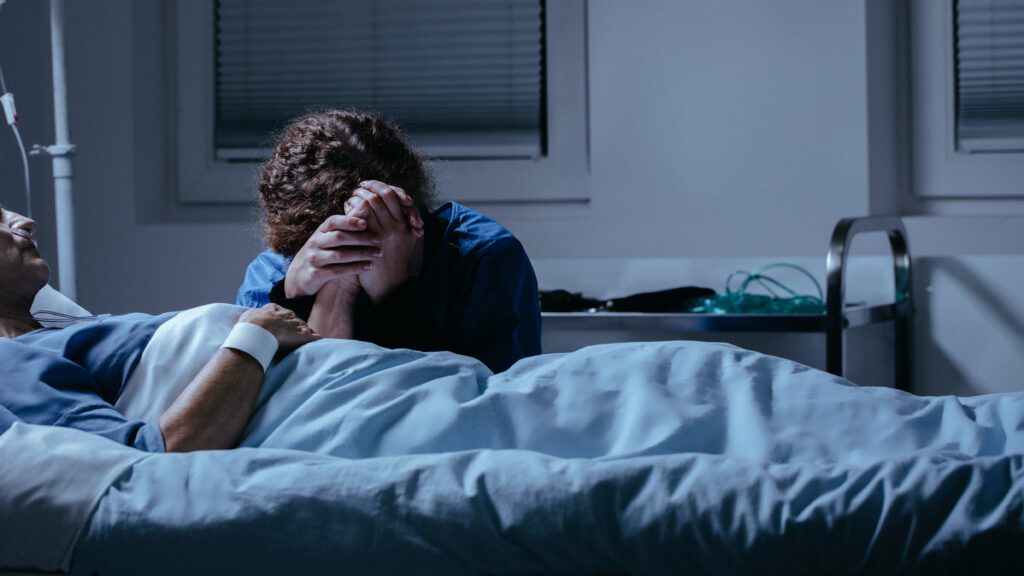Health
Spouses of cancer patients at greater risk of suicide: study

The suffering associated with being diagnosed with cancer is something that doctors commonly anticipate in patients, but the suffering often affects more than just the patient. It can blanket an entire household, burdening spouses and other family members with stress and anxiety and the exhausting routine of dealing with a life-threatening illness.
But while standards exist for assessing and managing patients’ pain, it is often “hidden” among family members, sometimes with devastating consequences, says Weiva Sieh, an epidemiologist at MD Anderson Cancer Center. In a study published in JAMA Oncology It emerged on Thursday that spouses of cancer patients have a significantly higher risk of suicide attempts and death than those married to people without cancer.
“Psychosocial problems in cancer patients themselves are better anticipated, generally known and accepted,” says Sieh, who did not participate in the study, but wrote an accompanying letter. editorial in JAMA Oncology. “This problem is not very well recognized. Fortunately, mental health is often treatable. It’s just a matter of recognition.”
To conduct the study, researchers used data from national patient databases in Denmark, which allowed them to see in the registry people who had been diagnosed with cancer, those individuals’ spouses, and their history of psychiatric care. When they analyzed the data, the scientists found that spouses had a 1.28 times higher risk of suicide attempts and 1.47 times higher risk of suicide attacks compared to people whose spouses had never had cancer.
That risk varied based on a few factors, says Fang Fang, professor of epidemiology at the Karolinska Institute in Sweden and senior author of the study. When patients had more aggressive cancers, their spouses were at greater risk of suicide attempts and deaths, while there was no significant increase in the risk associated with cancers with better prognoses, she said. “If you’re diagnosed with really serious cancers, like pancreatic, the risk is higher. The risk is also higher immediately after diagnosis, she said.
According to the study’s analysis, the partner’s risk of attempting suicide increased 1.45 times and the risk of death by suicide increased 2.56 times in the first year after cancer diagnosis – although research period of 30 years, an increased risk persisted.
Suicide is generally a rare outcome. In this study, there was an absolute increase of roughly 16 suicide deaths per 100,000 people per year – a small increase overall – but that does not detract from the weight of this observation. Each of these lives matters, the experts emphasized, and the observed statistical increases in suicide risk are often indicators of a much broader unmet need for mental health care. “Any increase in suicide risk is just the tip of the iceberg,” says Sieh of MD Anderson. “A significant increase in suicide – what does that mean for the large number of people who suffer from depression and do not commit suicide?”
In this study, that observed increase “sheds a very important light on how serious it can be for cancer caregivers,” says Alyson Moadel-Robblee, a psychologist at Montefiore Einstein Comprehensive Cancer Center, who did not collaborate on the article. “For people who don’t have support, it can go down a very dark road.”
Cancer brings a world of burdens to patients and their primary caregivers, often spouses. There can be unexpected, sometimes even bankrupt financial costs associated with treatment. There’s navigating the Byzantine healthcare system and crash courses in oncology jargon and medical knowledge.
“In addition, you think about your loved one, who may be dying or will soon die from cancer. It’s extremely scary. Many family members, especially spouses, feel a sense of helplessness,” Moadel-Robblee said. “If you see someone suffering and you can’t solve it and you don’t know how to get help or how to label your emotions, and you don’t know if it’s depression and if it’s treatable, then you can hide it. And when you do that, it can take on a life of its own.”
In extreme cases, Moadel-Robblee says, it can lead to suicidal thoughts, attempts and death. While theoretically anyone could be in such a cycle, Moadel-Robblee said some people are more vulnerable to it than others. This was also evident in this study, as people with a history of psychiatric illness appeared to be at greater risk of suicide attempts and deaths after their partner’s cancer diagnosis.
This suggests that there may be some important touchpoints that clinicians can target for cancer family interventions, such as providing more resources to families and spouses in the first year after a diagnosis, screening for individuals with a history of mental disorders, and aimed at families with a poorer prognosis. That may be easier said than done, Moadel-Robblee emphasizes.
Right now, mental health services in oncology are much more focused on the patient than the family, she said. “Not every cancer center has a caregiver support program,” she said. Even some of the resources centers provide can be difficult for primary care providers to utilize, Moadel-Robblee added.
“We do offer a support group for caregivers, and they don’t come often because they are too busy. They work and care. It’s a catch-22,” Moadel-Robblee said. “There is no need for such a practical intervention to help caregivers. That’s a whole different area we can get behind.”
If people can provide it, informal support can make a big difference. “If it’s a friend,” Moadel-Robblee said. “The best thing you can do is say, ‘Tell me how you feel.’ I may not be able to help, but I’m here to listen. Can I cook for you? Help with the laundry? Is there anything practical?’ That is a huge operation.”
If you or someone you know is considering suicide, contact the 988 Suicide & Crisis Lifeline: call or text 988 or chat 988lifeline.org. For TTY users, use your preferred relay service or dial 711 then 988.













